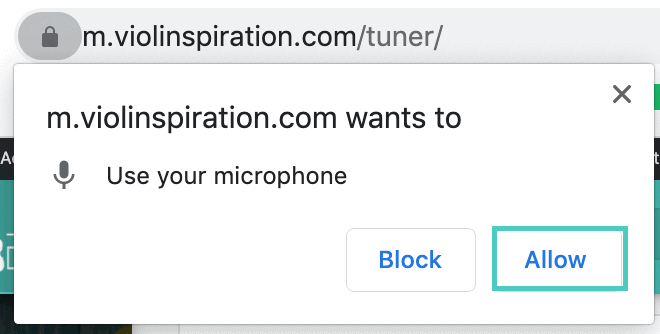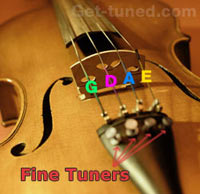
Now, if the fourth finger is placed correctly, the pitch should be identical to the next string. What you need to do, is place your fingers on the violin’s fingerboard in the “whole-note, whole-note, half-note, whole-note” position (also known as the 1, 2, flat-3, 4 position). How it works, is by starting on the low “G”, and moving up from there. Relative tuning on the violin doesn’t require a tuning at all, and is pure “tuning by ear”. Make sure to check each string again with the piano once tuned, as sometimes the strings stretch a little when the other strings are tightened. Then it’s a simple case of adjusting the violin’s tuning peg (if it’s a huge difference) or fine-tuner.Īfter which you simply repeat the same process for each string, and there you have it! When tuning the violin using the piano, it’s best to start with the “A” key on the piano, and then play the “A” string on the violin at the same time, and compare whether the violin note sounds higher or lower than the piano note. Tuning a violin by ear will require one of two methods, either using a piano, or doing what is called “relative violin tuning”, which is tuning the violin based on the pitches of the other strings. The few main ones are tuning by ear, and using a violin tuner (the latter being the most accurate of the three methods).

BEST VIOLIN TUNER APP HOW TO
Now that you know the basics of how to tune a violin with the pegs, it’s time to learn about the various methods that go along with tuning a violin. Types of Violin Tuning & How to Use Them? Getting the pitches accurate using the tuners though, varies from tuner to tuner. The function of the violin fine-tuners is inherent in their names, as you use them to get the violin strings from “almost there” to pitch perfect. Once each string is close enough, then they switch from tuning using violin pegs, to using the fine tuners at the base of the fingerboard. The violinist first gets each string to within a semi-tone of the required note, either by copying the notes on the piano, or by using a violin tuner. However, when we look at the actual tuning of the violin, the best practice is as follows. The reason for this has been speculated to be because the “A” and “D strings are closed to the middle of the fingerboard, and so less warping and damage to the violin will occur, but the results is that the tone of the violin generally sounds better. The orchestral violinists generally start with their “A” string, the “D” string, “G” string, and finally the high “E” string. The first thing when wanting to know how to tune a violin for the first time, is to choose the right string. These are often called the “violin tuning notes”, and remembering which ones they are is vital when it comes to tuning a violin.

The basics that have to be followed, are the four violin notes mentioned earlier. Whether you’re using a piano, a violin tuner, or an app on your phone, there are a few basic principles that still apply when tuning a violin. The strings then go over the bridge, and all the way to the other end of the violin, where they’re attached to the tuning pegs. The strings are hooked into the fine-tuners in the lower-half of the violin body. The violin strings are named after music notes, and the notes are G, D, A, and E respectively (each string being higher than the previous one, going from left to right). When it comes to tuning, the pegboard is the main component used, however there are also some fine-tuners attached to the body of the violin, and these are generally used when tuning the violin to the level of accuracy required for precise, beautiful music. Of course the violin strings are also a component, and we’ll get to them shortly. 3.1.1 Tuning the Violin Using the PianoĪ violin is made up of three main parts, namely the fingerboard, the tuning pegs (attached to the pegboard), and the body.3 Types of Violin Tuning & How to Use Them?.


 0 kommentar(er)
0 kommentar(er)
